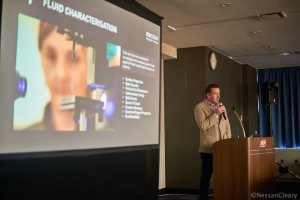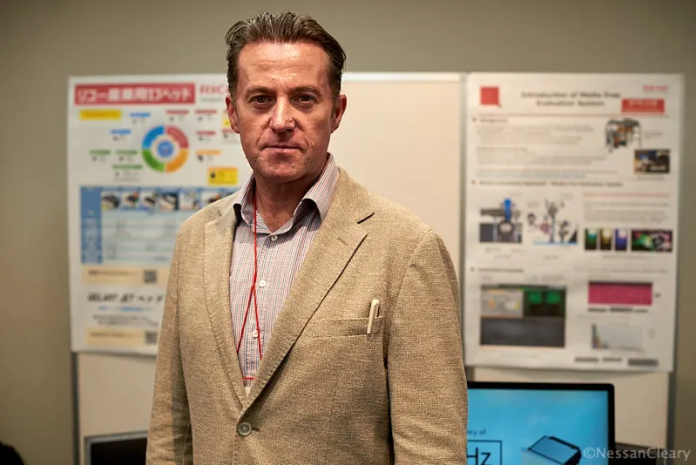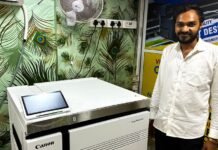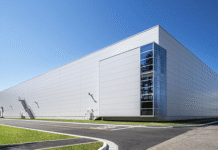Ricoh used its time at the recent Japan Inkjet Technology Forum to announce a new European inkjet integration company and to introduce a new media evaluation tool to help in developing inkjet print projects.
The Media Free Evaluation system has been designed to help analyze the interaction between a printhead and a fluid. Graham Kennedy, general manager of industrial solutions for Ricoh Europe, explains, “We work closely with many of the fluid development companies to ensure that their fluids match the printhead and speed up time to market.”
That means jetting fluids to be tested through a given printhead but the results can be affected by the substrate used. Kennedy added, “Ink that continues to spread after printing can hide artifacts when later inspected. Using manual inspection methods is painfully time-consuming and limited to short print runs. Drop watchers are limited by the camera’s point of view and depth of field.”
The new evaluation system aims to get around these issues. It is based around a precision machined glass drum that rotates continuously and is backlit by an LED. There’s a color LCD camera above this drum and a monochrome drop watcher to one side. The printhead is mounted above the drum so that it can jet ink directly onto the drum as it rotates. The cameras pick up the droplets as they land. The drum then rotates past a wiping station, which cleans off the ink ready for the next drops.
The data from the cameras can be analyzed by software, which picks up any flaws. Kennedy notes, “We have the data that confirms to the customer the results that they should expect. You can see the impact of changes across the entire printhead.”
The actual fluid impact is recorded immediately. The operator can change parameters in the software on the fly to gauge the effectiveness of change in real-time. He adds, “We believe it’s the only tool that can show us the fluid dynamics and the behavior on the media.”

It can be used with a variety of different fluids, including aqueous, UV, solvent, and oil. It has a mounting for a single printhead and uses different brackets to accommodate different heads complete with their drive electronics. As such it’s not limited to Ricoh heads.
Kennedy also talked about the support that Ricoh offered to OEMs using its printheads to develop their own products. He noted, “Printheads integration is not always easy so our team will help with the selection of the printheads and will advise on ink, ink delivery system, drive electronics and DFEs, pretreatment and curing systems and more so it’s a one-stop shop relationship.”
To this end, Ricoh is setting up a new company, Ricoh Printing Solutions Europe, to handle industrial inkjet integration projects. It will be based at Ricoh UK’s main base in Telford, England. However, this appears to be more of an internal reorganization rather than adding any new capability. Kennedy explained to me: “The purpose is to shorten the decision-making chain which can be quite difficult in large companies.”
Ricoh already has extensive facilities at its Telford plant for testing different fluids with its printheads, as well as helping customers build waveforms and other aspects of developing inkjet print systems. Kennedy adds, “Co-development with the right partner is critical and our offering for customers is well proven.”
Currently, the UK-based industrial print business operates as part of the larger Ricoh Europe division which also includes all the production electrophotographic presses as well as the continuous feed and sheetfed inkjet presses, meaning that there are several layers of management that are not all relevant to the OEM industrial inkjet segment.
Under the new arrangement, Kennedy will report directly to Eiji Tagami, business director of industrial printing for Ricoh UK, who in turn will report directly to Koji Miyao, head of Ricoh’s Graphic Communications business based in Tokyo. However, Kennedy says that this does not fundamentally change Ricoh’s market offering, noting: “For customers, it’s just business as usual.”
Ricoh already has a similar approach in North America so this new company simply brings the same organizational structure to the European market. The new business won’t start until April 2025, which Kennedy says is due to the time it takes to register a new company and set up the back office infrastructure.
You can find more details on Ricoh’s inkjet business from ricoh.com.

















